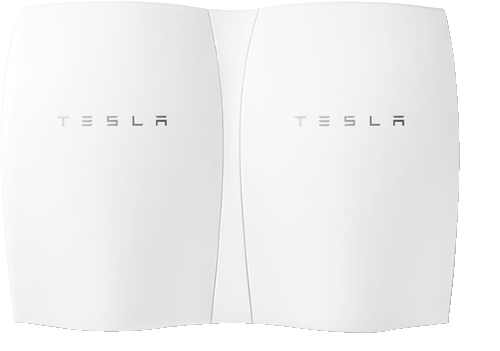Tesla announced the PowerWall, a rechargeable lithium-ion battery designed to store energy at a residential level for load shifting, backup power and self-consumption of solar power generation. It consists of Tesla's lithium-ion battery pack, liquid thermal control system, and software that receives dispatch commands from a solar inverter. The unit mounts on a wall and is integrated with the local grid to harness excess power and give customers the flexibility to draw energy from their own reserve. Tesla also announced the PowerPack, a utility scale system with 100 kWh battery blocks that are grouped to scale from 500 kWh to 10 MWh+. These systems are capable of 2 to 4-h continuous net discharge power using grid-tied bidirectional inverters. They support applications including peak shaving, load shifting and demand response for commercial customers

The PowerWall rechargeable lithium-ion battery
In his inspirational message to his mostly fan-based audience, Elon Musk, (I almost expected him to shout “Can I get an amen”) described how the problems with polluting energy sources will only lead to catastrophic results and how clean renewable energy can reverse or at least quell the advance of CO2 overload. Musk said that PowerPack can be combined indefinitely, and you could combine 10,000 PowerPacks to provide 1 GWh or enough to power a city the size of Boulder, CO. But Musk didn’t stop there – saying you could connect 160 million PowerPacks to power the entire U.S., or thinking really big, you could combine 2 billion PowerPacks to power the entire globe. Now that’s visionary thinking and we really need some positive direction thinking, even if it is fraught with difficulties. We can work out the details as we go.

Elon Musk introduces the PowerPack utility scale system with 100 kWh battery blocks that are grouped to scale from 500 kWh to 10 MWh+
We are already starting to see responses from the industry, such as research companies like Lux Research. The researchers said that in order for Tesla to see success it must tackle three key areas:
- Cost reduction beyond Li-ion cells. At $350/kWh, Tesla is the industry’s current price leader for stationary Li-ion packs, thanks to its partnership with Panasonic and its upcoming Gigafactory. However, consumers will also need to pay for an inverter, installation, and other costs, which altogether will nearly double the $3,000 price of Tesla’s entry-level PowerWall unit. Tesla will need to push their power electronics and installation partners to cut their costs further – or do that itself, either in-house or via acquisitions.
- Offer financing and new residential business models. Tesla and SolarCity have relied on California’s self-generation incentive program (SGIP) for the majority of its systems to date. However, SGIP is an unsustainable model in the long term. Tesla has to establish new business models beyond residential load shifting, to open up all U.S. and international markets. Moreover, Tesla’s stated goal of selling 30% of its output from the 50 GWh Gigafactory to stationary markets implies about $3.7 billion in revenues in 2020. Providing financing options for many of those purchases will be key, echoing the successful strategy that solar has already employed.
- Work with utilities, not against them. As more distributed solar comes onto the electric grid, utilities are increasingly at odds with consumers and companies like SolarCity. Energy storage can turn distributed generation into a utility asset, but only a few utilities have explored owning and controlling smaller residential and commercial systems. For Tesla to truly impact the stationary market, it will need to work with utilities and grid operators to ensure its solar and storage solution can be a key grid management tool. Its initially announced utility projects – with Southern California Edison and Oncor –are excellent demonstration trials, but just a start; Tesla will need to bring hundreds of more utilities on-board, which will take time and resources.
Even though Tesla has succeeded in pushing down cell and pack costs for stationary energy storage, which will accelerate this market, power electronics, installation, and widespread availability of financing remain open questions, according to Dean Frankel of Lux Research.
“The quicker Tesla can build partnerships, make acquisitions, and invest further to address these issues, the better its chance of hitting its hugely ambitious goal of selling 15 GWh of stationary energy storage in 2020.”
It’s not a done deal but Elon Musk and Tesla are pushing the industry in a new, exciting direction. I look forward to hearing from the power industry to see if we can work the details.
Advertisement





